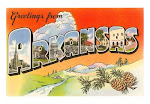Introduction:
Rain, rain, go away? No way! Read this poem to children who can't go out to play and their frustration might just turn into inspiration!
April Spring Rain
by Langston Hughes
Let the rain kiss you,
Let the rain beat upon
your head with
silver liquid drops.
Let the rain sing you a
lullaby.
The rain makes still
pools on the sidewalk.
The rain makes running
pools in the gutter.
The rain plays a little
sleep-song on our roof at
night-
And I love the rain.
From The Bill Martin Jr. Big Book of Poetry, edited by Bill Martin Jr. with Michael Sampson. Simon & Schuster. 2008
Extensions:
Read this poem on a rainy day and take some time to quietly listen to the rain.
Read this poem as a companion to Out of the Dust by Karen Hesse and talk about how the characters in the book long for rain to relieve the drought they are experiencing.
Read the poem on the first day of April and discuss weather patterns.
Read other poems about rain (Rain, rain go away; April showers bring May flowers, the Itsy Bitsy Spider)
Make rain noises with bodies only. Rub hands together, snap fingers, clap hands, slide/stomp feet. Start soft and slow. Go faster and faster,and harder and harder, just like a real rain storm. Act out a rain storm, complete with "claps" of thunder, flashes of lightning (turning lights off and on), out came the sun, and so on.
Make a rainstick. Use rice or beans and paper towel rollers, or be creative with other materials on hand. Decorate them, use them in the dramatic play. Talk about how authentic rainsticks are made. According to wikipedia.com rainsticks were invented in Chile, are made from cactus and were believed to produce rainstorms when played. For more information, pictures, and even a sound clip, go to http://en.wikipedia.org/wiki/Rainstick. What an exciting way to tie into a unit on Chile or weather!
*************************************************************
POETRY BOOK REVIEW: CURRICULUM CONNECTION-- A book of poetry for children or teens ideally suited to science, math, or social studies instruction and published since 1995
The Brothers' War, Civil War Voices in Verse
By J. Patrick Lewis
National Geographic, 2007
ISBN 978-1-4263-0037-0

Introduction:
This book for middle and high school students, describes the Civil War in poems written by J. Patrick Lewis from the point of view of soldiers, family members, slaves, abolitionists, and generals. Lewis writes each poem in a different format. Each poem is paired with poignant photographs from the war and historical notes. In the author's notes at the end of the book, Lewis explains his writing choices. Also included at the end of the book is a helpful timeline of Civil War events, and a map of the United States with major battles marked. The Civil War took the lives of thousands of Americans, including brothers and family members who joined opposite sides and fought against each other, as illustrated in the following poem from the book.
Blood of Our Fathers,
Blood of Our Sons
The First Battle of Bull Run
July 21, 1861
Five thousand fell that day by Sudley Road,
Five thousand left their mothers in despair.
A world gone red-the Bull Run overflowed
With blood, raining in the violent air.
On widow Henry's fallow fields, I saw
A boy about my age fall where he stood,
Face down, writhing, clutching at mud and straw,
As if God's earth could do him any good.
By what outrageous powers of circumstance
Do men take arms against their very own?
The Yankee sergeant's bullet snapped the bone.
Roy Pugh, his Rebel son, had little chance.
Distraught, the sergeant rolled him on his side.
Roy whispered, "Father...Why?" before he died.
Extensions:
Use the timeline at the end of the book to select poems to correspond with the study and discussions of Civil War battles.
Discuss the connection between the photographs, poems and events of the war.
The author encourages readers "to try your own hand at a poem written from a point of view not your own...Try telling the same story from another point of view. Every event can be seen through multiple prisms".
****************************************************
POETRY CHOICE: BIOGRAPHICAL POETRY—Post a Poetry BREAK with a biographical poem of your choice OR a Poetry BOOK REVIEW on a biographical poetry book of your choice
Introduction:
Cesar Chavez was a Mexican American who helped organize the National Farm Worker Association which later became the United Farm Workers Union. He led the movement to bring about better working conditions and quality of life for the people who harvest this country's food. Read the following poem to start the discussion of this heroic man's life.
Cesario
by Carmen T. Bernier-GrandCesario was his real name.
Not See-zar. Not even Cesar.
Cesario Estrada Chavez
was the name given to him
by his parents,
Juana Estrada
and
Librado Chavez
en el dia de su santo,
March 31, 1927,
near Yuma, Arizona.
Cesario,
named for his abuelito,
better known as Papa Chayo.
Calling him See-zar Cha-VEZ
came later,
when his teacher couldn't
or wouldn't
call him Cesario.
People called him
See-zar Cha-VEZ
or Cesar Chavez.
It was better to call him
Friend of the Farm Workers,
for those were la gente
for whom he struggled.
From Cesar, Si, Se Puede! Yes We Can; written by Carment T. Berneier-Grand, illustrated by David Diaz. Marchall Cavendish, 2004.

Extensions:
Translate the Spanish words in italics to English using the glossary in the back of the book.If possible, translate and read the entire poem in Spanish.
Talk about why the teacher would not call Chavez by his given name. Discuss how it would feel to not be called by one's name, especially by a teacher.Read the rest of the book to learn more about Cesar Chavez, migrant farm workers, and the United Farmers Union.



No comments:
Post a Comment